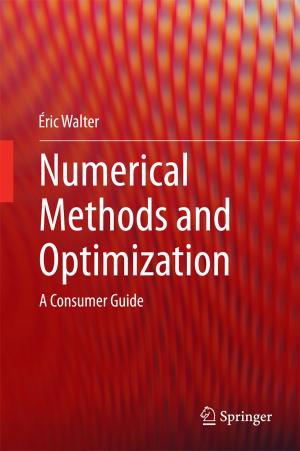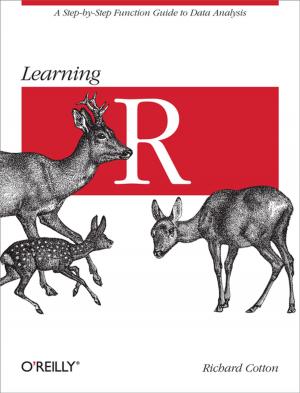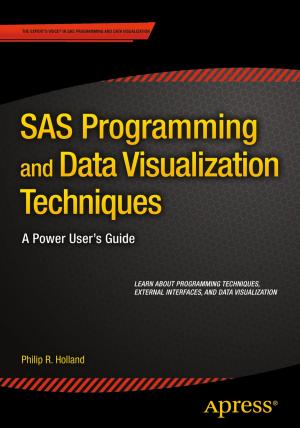Microsoft VBA Loop Statements for Word and Excel Includes Do…Until, While…Wend and For…Next Statements
Nonfiction, Computers, Programming, Programming Languages, Visual BASIC, Database Management, Data Processing| Author: | Kenny L Keys | ISBN: | 1230000166001 |
| Publisher: | Kenny L Keys | Publication: | August 31, 2013 |
| Imprint: | Language: | English |
| Author: | Kenny L Keys |
| ISBN: | 1230000166001 |
| Publisher: | Kenny L Keys |
| Publication: | August 31, 2013 |
| Imprint: | |
| Language: | English |
This book is the third and final book in the Microsoft VBA Codes Are Fun, Simple, and Easy to Learn In One Hour or Less series. I’m dedicated to making VBA as simple as possible for anyone who wants to harness its power and efficiency. Since I’ve already explained Microsoft VBA statements, built-in objects, arrays, variables, integers, Sub, Private Sub and Public Sub tags in my previous books, I won’t be explaining them in this one. I also use everyday language with pictorial examples to explain how to understand and write Microsoft loop statements in both Word and Excel. This book contains more than 12 complete VBA Loop Statements or codes for both Microsoft Excel and Word that will allow the user to complete everyday tasks in seconds: aligning all normal text paragraphs, centering all header text, centering all images and photographs, while ignoring text and headers; there’s also VBA codes in this book that will simultaneously re-size all images in a user’s document, delete extra paragraph lines, insert empty paragraph lines, loop through spreadsheets and add custom Sparklines, and this book contains a VBA code that will color-code cells and their content based on logical statements, i.e., it will allow you to do what the Conditional Formatting feature was designed to do for you. I’ve also included a fun quiz chapter; your answers will not be provided by me; instead, you’ll need to run each complete VBA code in the VBA module window; if you’re wrong, you’ll immediately know it, because the code(s) will either not work for you, or you’ll receive an error message, while in the VBA Module window for Word and/or Excel.
For users who purchase this book, I encourage each of you to use it in conjunction with your Microsoft Word and/or Excel VBA module help menu(s). Anything that I’ve not explained in this book can be found by typing a specific object name into the VBA window’s help menu search field, e.g., ActiveDocument, Range, Cells, InlineShapes, etc… Because this is my last book in this series, I encourage users to consider purchasing the first two books in this series, because there are many things that I don’t explain in this book, because I’ve already explained them in one of the previous two books in this series.
Every person is different. Personally, I don’t need to spend days or weeks reading a 400-page textbook or manual, in order for me to quickly master any type of program language; this is why all of my books are designed for people like me—individuals who don’t want to spend more than fifteen minutes or an hour of his or her time reading through tutorial or how-to books. Most of the people that I know that purchased 400-plus-page textbooks or manuals never read them—they just toss them into their desk drawers and forget about them. When a person can complete a tutorial book in less than an hour, he or she is more likely to regularly re-open the book and use it whenever he or she needs to; this is the main reason why my books are all short and straight to the point. Most people like things that are fun, fast and easy, and I’ve tried to make this book fall under those categories.
Lastly, before users rely on a critic’s review of my book(s), I encourage him or her to search the internet for my free samples and downloadable files; these can be found on my author and biography pages and from my networking sites. Use these free tools to make your decision about my skills and my abilities with Microsoft VBA for Word and Excel, before you purchase this book or any of my other books.
This book doesn’t contain an index, a reference section or a study guide.
This book is the third and final book in the Microsoft VBA Codes Are Fun, Simple, and Easy to Learn In One Hour or Less series. I’m dedicated to making VBA as simple as possible for anyone who wants to harness its power and efficiency. Since I’ve already explained Microsoft VBA statements, built-in objects, arrays, variables, integers, Sub, Private Sub and Public Sub tags in my previous books, I won’t be explaining them in this one. I also use everyday language with pictorial examples to explain how to understand and write Microsoft loop statements in both Word and Excel. This book contains more than 12 complete VBA Loop Statements or codes for both Microsoft Excel and Word that will allow the user to complete everyday tasks in seconds: aligning all normal text paragraphs, centering all header text, centering all images and photographs, while ignoring text and headers; there’s also VBA codes in this book that will simultaneously re-size all images in a user’s document, delete extra paragraph lines, insert empty paragraph lines, loop through spreadsheets and add custom Sparklines, and this book contains a VBA code that will color-code cells and their content based on logical statements, i.e., it will allow you to do what the Conditional Formatting feature was designed to do for you. I’ve also included a fun quiz chapter; your answers will not be provided by me; instead, you’ll need to run each complete VBA code in the VBA module window; if you’re wrong, you’ll immediately know it, because the code(s) will either not work for you, or you’ll receive an error message, while in the VBA Module window for Word and/or Excel.
For users who purchase this book, I encourage each of you to use it in conjunction with your Microsoft Word and/or Excel VBA module help menu(s). Anything that I’ve not explained in this book can be found by typing a specific object name into the VBA window’s help menu search field, e.g., ActiveDocument, Range, Cells, InlineShapes, etc… Because this is my last book in this series, I encourage users to consider purchasing the first two books in this series, because there are many things that I don’t explain in this book, because I’ve already explained them in one of the previous two books in this series.
Every person is different. Personally, I don’t need to spend days or weeks reading a 400-page textbook or manual, in order for me to quickly master any type of program language; this is why all of my books are designed for people like me—individuals who don’t want to spend more than fifteen minutes or an hour of his or her time reading through tutorial or how-to books. Most of the people that I know that purchased 400-plus-page textbooks or manuals never read them—they just toss them into their desk drawers and forget about them. When a person can complete a tutorial book in less than an hour, he or she is more likely to regularly re-open the book and use it whenever he or she needs to; this is the main reason why my books are all short and straight to the point. Most people like things that are fun, fast and easy, and I’ve tried to make this book fall under those categories.
Lastly, before users rely on a critic’s review of my book(s), I encourage him or her to search the internet for my free samples and downloadable files; these can be found on my author and biography pages and from my networking sites. Use these free tools to make your decision about my skills and my abilities with Microsoft VBA for Word and Excel, before you purchase this book or any of my other books.
This book doesn’t contain an index, a reference section or a study guide.















